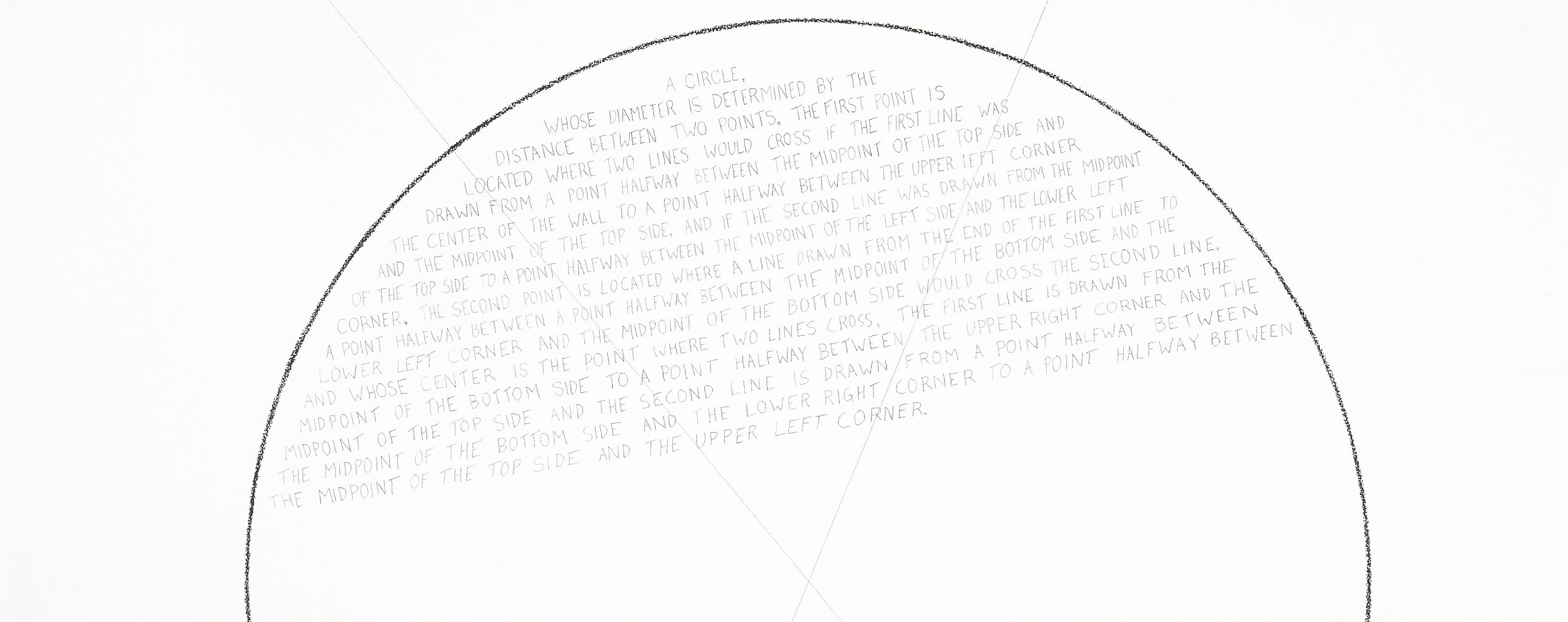Sol LeWitt
- Sol LeWitt
The location of six geometric figures. (The specific locations are determined by the drafter.)
September 1975
Black pencil and black crayon
The Art Institute of Chicago, Through prior gifts of Judith Neisser and Mary and Leigh Block; Norman Waite Harris Purchase Fund, 2006.166
First Installation
Gentofte Kommunes Kunstbibliotek, Copenhagen
First Drawn By
Steingrim Laursen, Sol LeWitt
MASS MoCA Building 7
Ground Floor
This work belongs to a series of drawings in which Sol LeWitt experimented with textual instructions that direct the draftsman to construct shapes on the wall. Called location drawings, these works are done in black pencil with geometric figures emphasized in crayon, foregrounding the process of drawing as a problem-solving mechanism.
Wall Drawing 274 differs from other location drawings in that LeWitt does not explicitly prescribe the placement of the six shapes. Unlike The location of a trapezoid or The location of a parallelogram, both of which appear nearby, it is up to the draftsman installing the piece to determine where the shapes will be placed on the wall. The draftsman must be familiar with LeWitt’s linguistic patterns as well as his drafting methods in order to produce a drawing that fits with the rest of LeWitt’s body of work.
Primarily, the draftsman must be aware of LeWitt’s emphasis on essentials. He thought of six figures as fundamental to drawing: the circle, square, triangle, rectangle, trapezoid, and parallelogram, and had an interest in nine basic points on each wall: each corner, the midpoint of each side, and the center. The six shapes in this drawing are defined according to the ways in which they can be constructed using lines drawn from these points. The figures take shape at the intersections of these lines, and it is the draftsman’s challenge to determine a place for each figure that is visually appealing, while retaining the rigor and precision of LeWitt’s working method.
Backstory
For the benefit of both the draftsman and the viewer interested in decoding the process by which this drawing was created, every line on the wall has been labeled according to its function in determining the location of the shapes. Lines that contributed to the definition of the circle, for instance, are marked with a circle followed by two numerals that further describe the line’s role in the drawing. For example, the line that was the third line in the first group of lines that were drawn to find the location of the circle would be labeled with a note like this:
O31
In this way, the process of drawing, the act of figuring out and defining the shapes, becomes apparent, visible as an interaction that unfolds both through geometric conception and physical action.


